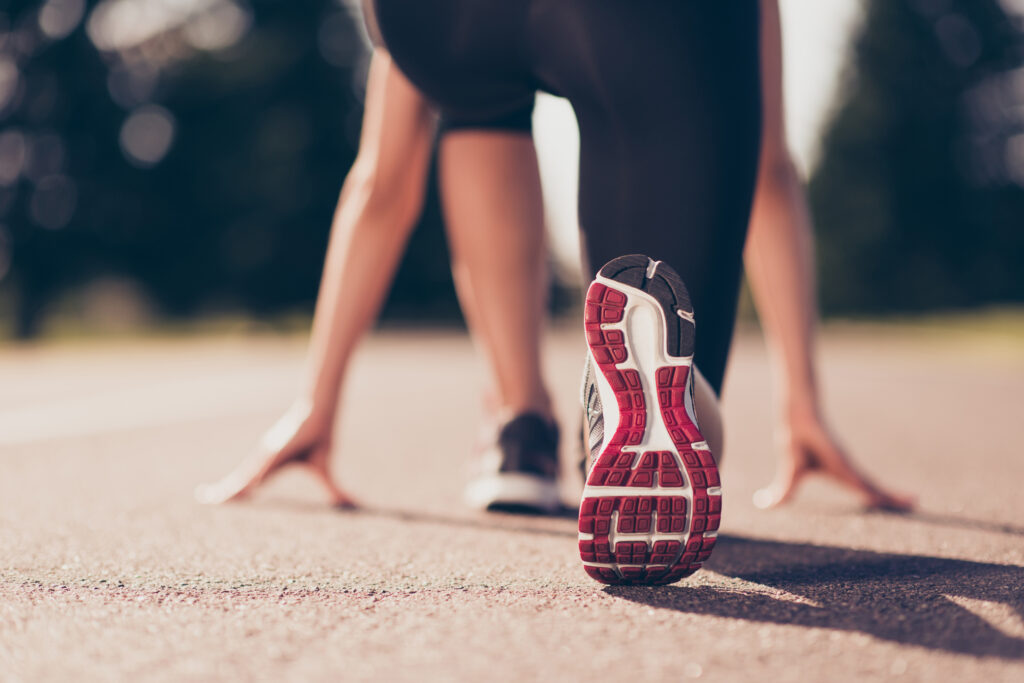
by Jeff Kittmer
Have you ever experienced foot pain in the morning as you take those first steps out of bed? Only to have the pain subside as the morning wears on. Plantar fasciitis is one of the most common causes of foot pain in athletes. Plantar fasciitis is an overuse condition where prolonged or intense stress has been applied to the plantar fascia, creating tissue fatigue and microtears at the attachment point of the calcaneus (heel). This overuse condition results in inflammation of the fascia within the sole of the foot.
Plantar fasciitis can occur in one or both feet. The pain is slow to build and is not caused by a specific injury or trauma. You may experience pain during the first steps in the morning or after periods of sitting. Pain may worsen while climbing stairs or during the pre-swing phase while running or walking. The discomfort usually decreases after the first 30 – 45 mins of activity and then returns after 2 – 3 hours.
Over training, poor technique, and running on hard surfaces are frequent causes of overuse.
The common factors that makes one susceptible to plantar fasciitis are:
1. Poor foot biomechanics – over pronation/supination of the ankle, or excessive external hip rotation while walking or running
2. Short and tight gastrocnemius/soleus muscles (calves) – tendency for foot pronation
3. Collapsed or hyper-active arches
4. Improper footwear – shoes worn out, too flexible, too stiff, and or insufficient arch support
In order to soothe the sole, we need to reduce the inflammation of the plantar fascia, either lengthen the fascia in the case of Pes Cavus (high arch) or strengthen the foot in the case of pes callus (flat foot).
To soften and lengthen the plantar fascia in the case of Pes Cavus, the Infinity Ball does the trick. Place the offending foot upon the ball with just enough pressure to engage the tissue; but not too much. How much is enough? I like to use the phrase ‘when it hurts so good’, as opposed to, ‘it hurts so bad’. Slowly rock the foot back and forth massaging the fascia and the underlying muscles. It is also a great way to release any nagging trigger points within your feet.

In the case of Pes Callus, the towel toe scrunch will help to strengthen the feet and assist in restoring the natural curve of the foot’s arch. Place your foot onto a hand towel, scrunch the toes to gather some of the towel, release the toes, then scrunch some more. Scrunch up the towel until the end of the towel reaches your toes. Then begin again with the other foot, it’ll thank you later. Try twice a day for about a week and you should start to see some results.
Muscle tension in the calves and corresponding fascia, is a common factor in creating plantar fasciitis. To reduce this tension, we need to lengthen the posterior muscles of the lower leg. To facilitate this, stand on a step or ledge with your heels overhanging. Then lower the heels until you feel a steady pull up through the back of your calf(s). Hold the stretch between 30 sec – 1 min. Repeat this 3x a day for a week and you should notice an improvement in your ankle flexibility and reduction in foot pain.
To finish things off, I like to apply RockTape H20 to the sole of the foot. The lifting action of the tape separates the underlying layers of tissue and fascia from each other. This increases the blood flow, reduces the tension within the layers, and decreases the pain* throughout the day. Why the H2O tape? I don’t know about you, but my feet can get pretty sweaty during my workouts and I need its heavy-duty sticky action to hold things together. Anchor the tape to the back of the heel and run it along the length of your foot to the ball with paper off tension. Next run a decompression strip crosswise with paper off tension if you have a high arch. Or 25% stretch for a flatfoot to help wake the arch up.

Plantar fasciitis can happen to anyone, from a professional athlete to a workplace warrior. In most cases it is easily treated by wearing supportive footwear, reducing the intensity and or mileage of training, and following the above tips. If the condition persists for more than a week, you may have ankle or hip issues that need to be addressed by your friendly neighbourhood massage, physio, or athletic therapist.


